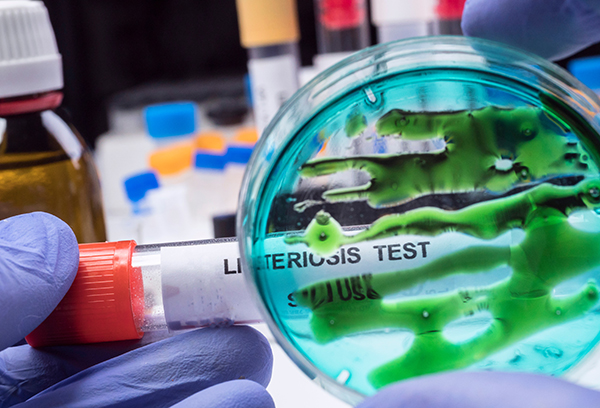Danish AI study shows common disinfectants may be useless against evolving listeria superbugs
- Scientists used AI to predict which Listeria strains would survive disinfectants, revealing genetic adaptations that make standard cleaning protocols ineffective.
- A Danish study analyzed 1,649 Listeria samples and found hidden resistance genes, exposing flaws in current sanitation practices across food facilities.
- Listeria forms biofilms that evade detection, allowing contamination to persist despite surface cleaning, risking outbreaks in processed foods.
- Recent recalls, including 12K pounds of blueberries and turkey bacon, highlight industry failures in preventing listeria outbreaks despite zero-tolerance policies.
- AI could enable precision sanitation, but corporate reliance on outdated disinfectants continues to endanger public health.
Scientists have harnessed artificial intelligence to predict which deadly Listeria monocytogenes strains can survive common disinfectants, and their work reveals an alarming truth about the bacteria’s genetic resilience.
Published in Scientific Reports, this groundbreaking Danish study proves that Big Food’s current standard cleaning protocols may be useless against the increasingly resistant pathogens that are lurking in processing plants, schools, and supermarkets. With recent recalls of 12,000 pounds of organic blueberries (FDA Class I) and nationwide Oscar Mayer turkey bacon pulls due to listeria contamination, this AI-powered forensic analysis couldn’t come at a more critical time.
The rise of “precision sanitation”
Researchers at the Technical University of Denmark (DTU) analyzed the complete DNA of 1,649 Listeria samples ranging from contaminated food (50%) to processing plants (30%), exposing the genetic “survival manuals” these pathogens use to evade disinfectants like benzalkonium chloride, a common industrial cleaner. Using machine learning, their AI predicted resistance with 97% accuracy, uncovering not just known resistance genes (qacH, bcrC) but also previously unknown genetic adaptations that let Listeria thrive despite rigorous sanitation.
“AI does not provide us with a recipe for new disinfectants, but it does tell us which bacteria are likely to survive which chemicals,” said senior researcher Pimlapas Leekitcharoenphon, revealing that Big Food’s current cleaning regimens are essentially little more than guesswork. The implications are dire: As regulatory agencies enforce “zero tolerance” policies for listeria in ready-to-eat foods, corporations continue to deploy one-size-fits-all disinfectants that are blind to bacterial evolution.
Biofilms and the illusion of cleanliness
Listeria’s biological warfare tactics include forming biofilms, which are slimy bacterial fortresses that cling to equipment, allowing strains to evade detection for months or even years. Shockingly, AI models faltered in real-world testing (accuracy dropped to 50-93%), proving that lab conditions fail to replicate the biofilm shields Listeria uses in factories.
Even worse? The study only examined quaternary ammonium compounds, leaving peracetic acid and other disinfectants untested. “The danger lies in the fact that a surface may appear clean, yet resistant bacteria can still be hiding in cracks and corners,” warned Leekitcharoenphon, highlighting how corporate negligence fuels silent outbreaks. Recent FDA data confirms 1,600 annual U.S. listeriosis cases, killing 260 people, mostly pregnant women and immunocompromised victims.ffyu
Recalls reveal systemic failures
The timing is prophetic: Just days before this study’s release, the FDA issued a Class I recall for Alma Pak blueberries—12,000 pounds shipped to North Carolina—after listeria detection. Likewise, Oscar Mayer turkey bacon vanished from shelves nationwide following USDA warnings of potential contamination. Despite corporate assurances (“no confirmed illness reports”), these incidents expose an industry that is scrambling to contain preventable disasters.
While AI offers hope for precision sanitation using customized protocols based on bacterial DNA, this breakthrough also indicts a broken system that is reliant on outdated chemicals. As Listeria’s resistance genes spread via plasmid DNA exchanges, the food industry’s refusal to adapt puts millions at risk.
With biofilm-resistant superbugs and corporate negligence rampant, consumers must demand transparency, sterilization overhauls, and an end to profit-driven shortcuts that sacrifice safety. Until then, your salad, deli meat, and even organic blueberries could harbor invisible killers.
Sources for this article include:
StudyFinds.org
Food-Safety.com
USAToday.com
ABCNews.go.com
Read full article here


